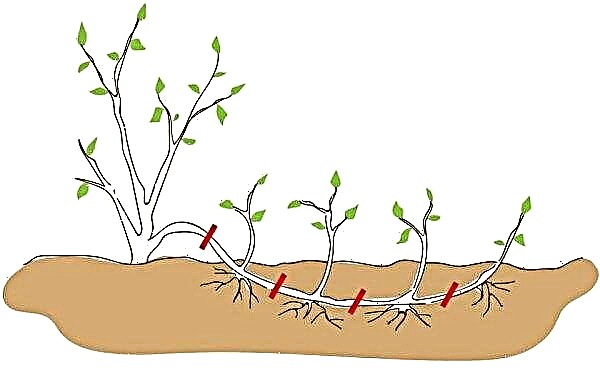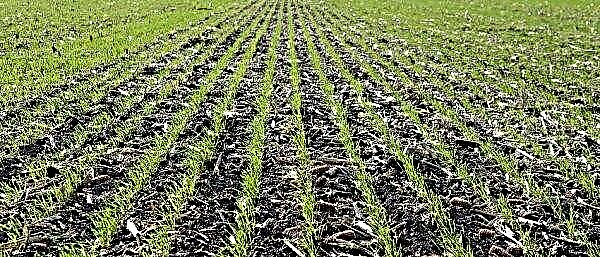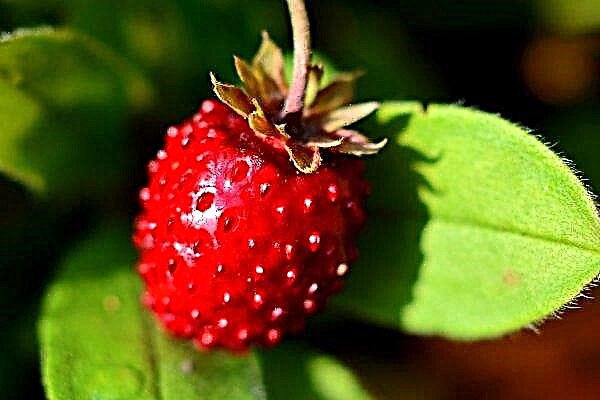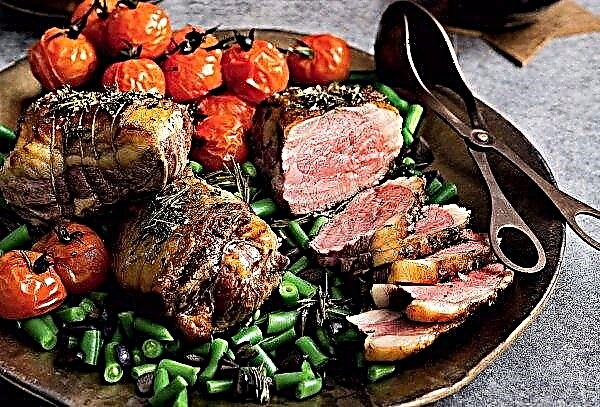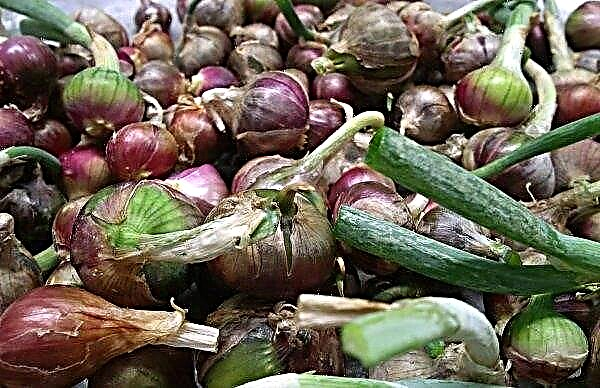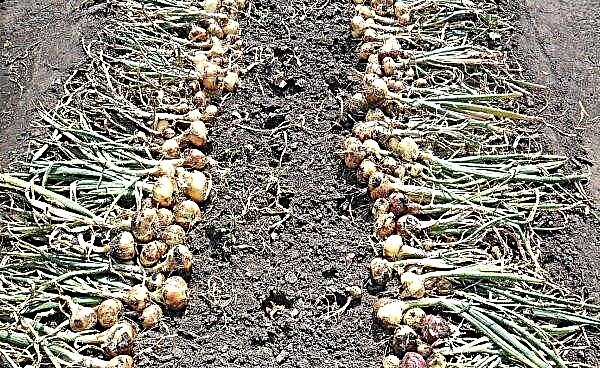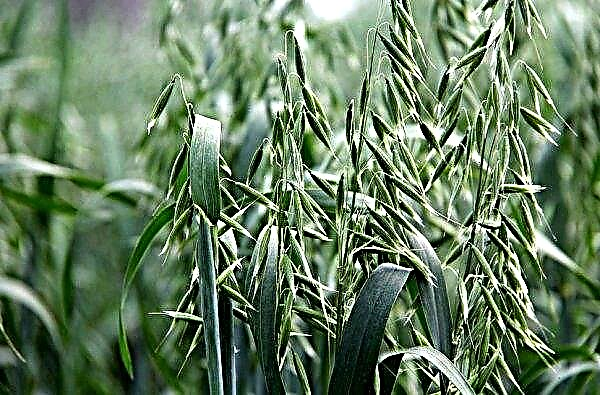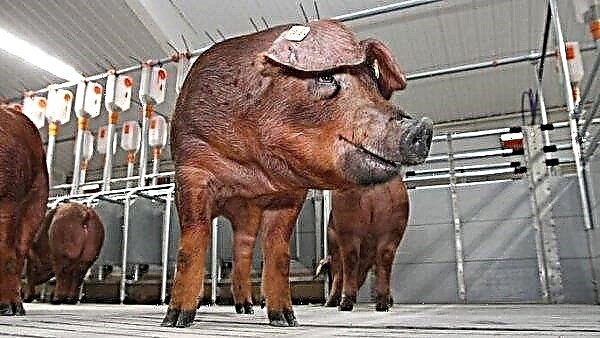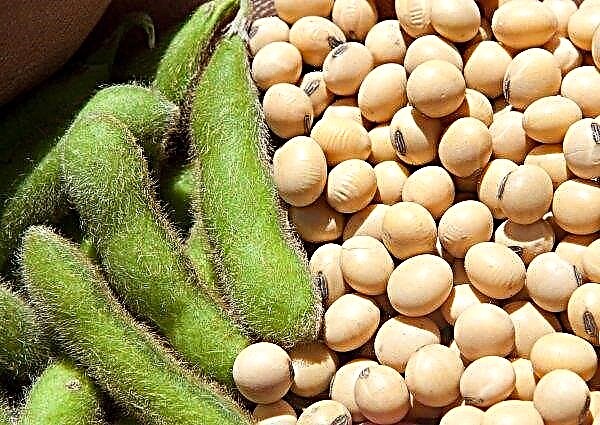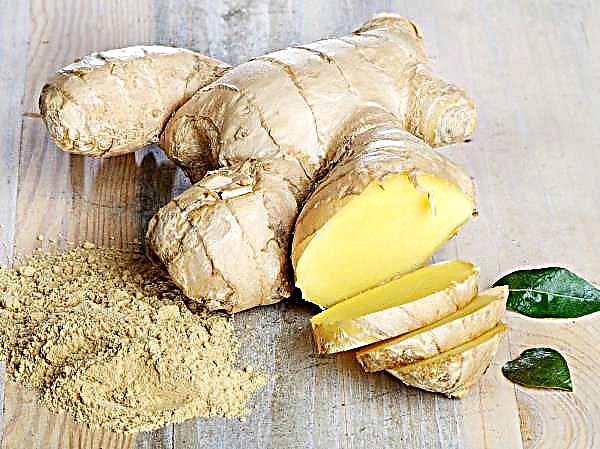Chickpeas are a popular legume product. In this article, you will learn about its characteristics, what it needs to germinate, and how to grow chickpeas on a windowsill at home.
The origin and description of the culture
Cultivation of chickpeas began about 7.5 thousand years ago in the Middle East. The area of cultural distribution during the Bronze Age reached Ancient Greece and Rome. In the tomb of Tutankhamun, Japanese archaeologists found on the walls drawings depicting twigs of this plant.
In addition to the name "chickpeas", other names of this plant are also known:
- lamb peas;
- cana kabul;
- knock;
- turkish peas;
- the bubble.

Today, Turkish peas are cultivated in more than 30 countries. These are mainly Asian countries; chickpeas are also common in North America, Austria, and Italy.
Did you know? Plants of the legume family, including chickpeas, are able to accumulate nitrogen in the root system and give it to the ground. So they enrich the soil and make it more fertile.
Description of the culture:
- chickpeas - an annual herbaceous plant;
- has a straight stem up to 70 cm in length;
- leaves are small, have teeth;
- fruits - short beans, round and slightly elongated;
- the bean contains 1-2 peas, very rarely their number reaches 3;
- the peas resemble the head of a ram, which is why one of the names of chickpeas appeared;
- the colors of chickpeas are different: yellow, brown, green;
- the fruits have a nutty taste;
- the plant is resistant to drought.

Varieties
There are several popular varieties of chickpeas:
- Krasnokutsky 195. It grows in the form of a bush, reaches a height of 40 cm. Peas have a yellow tint and pleasant taste. It is the most useful variety, as it contains a large amount of protein, about 30%. It can grow in complete drought and give a good harvest.
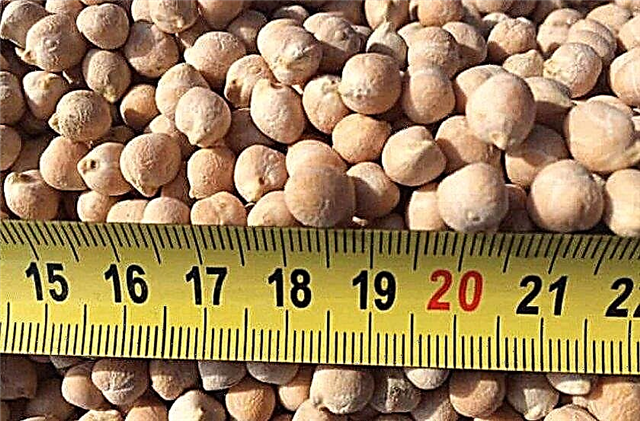
- State farm. The fruits are wrinkled, have a reddish tint. Contain 20% protein. Resistant to various diseases, such as ascochitosis and cracking of the fruit.
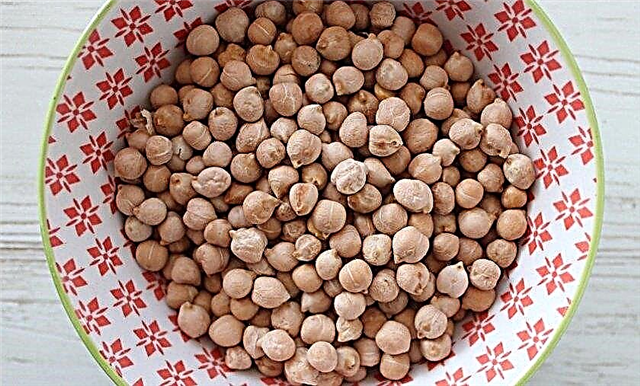
- Anniversary. This variety differs from others in its high fruitfulness: up to 3 kg of chickpea can be harvested on 10 m² of plantation. Not picky about leaving, withstands severe droughts.
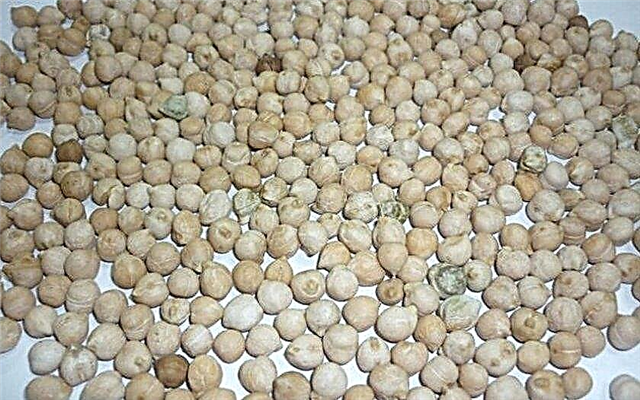
- Bujak. It has white flowers and fruits in a beige hue. Beans contain 27% protein.

Technological scheme of planting, cultivation
Before sowing Turkish peas, weeds are cleaned and cultivated. Chickpea grows poorly among weeds, because of this, he will not receive the necessary amount of moisture from the earth. An important condition is that sowing must be done after the earth has warmed up to + 5 ° C.
Chickpeas are sown immediately in open ground. The beds should be prepared in advance and located at a distance of 20 cm from each other. Planting scheme: the distance between the furrows should also be at least 20 cm, and for larger types of chickpeas it can reach up to 45 cm. During sowing, do not poke the peas very close to each other, the distance between them should be at least 10 cm.
How to grow chickpeas in the country
The technological process of growing chickpeas does not cause much difficulty, and your favorite summer cottage is quite suitable as a place for cultivating lamb peas. However, as in the case of other plants, this crop should be provided with high-quality care in order to get a rich harvest of chickpeas at the end of the season.
Choosing a place to land
First, you should decide on a suitable place for sowing chickpeas. It is advisable to choose those areas of the home garden that are open and well lit by the sun.
Preparing the soil for planting
To prepare the soil for planting Turkish peas, you need to collect and burn leaves, grass, branches in the autumn, and evenly distribute the ash on the site. After fertilizing with ash, you need to water the soil well so that it is wet. Processing ash will help improve soil quality.
In spring, closer to the beginning of May, the land will need to be plowed or dug up with an ordinary shovel. It is desirable that there are no lumps on the ground, and if they are, then carefully remove them.
How to grow from seed
Before planting, the chickpea grain must be dried, and the soil must be loosened. It is also advisable to treat peas with a preparation of nodule bacteria - this will help increase productivity by 30%. Seed can be planted immediately in open ground.
Protectant for chickpeas fungicidal, processing phases
Drugs that are effective against fungal diseases:
- "Maxim 025";
- "Maxim Star";
- Sertikor;
- Vial Trust.
Protectant is introduced before flowering or fruiting begins.
The use of disinfectants helps to reduce the risk of infection with fungal diseases and protects against pests, has a beneficial effect on productivity.
Seeding rate
Both on large plantations and in small gardens, sowing nochut should be carried out in furrows, the distance between which, as already mentioned, should be at least 20 cm.
Did you know? Nut was the main food crop in Rome and in Ancient Greece.
Maximum sowing depth
The sowing depth should be uniform and no deeper than 7 cm into the ground. To seedlings of lamb peas, and then the development of young plants, were simultaneous, you should pay attention to soil moisture. At first, watering should be carried out more often, and also to ensure that there are no weeds.
The timing
Lamb peas begin to be planted when the earth warms up to + 5 ° C. The term of disembarkation of a knout may vary from the second half of April to the first half of May.
Growing Features
Chickpea is a picky culture and does not require much attention. The highest yields on chernozem soils.
Watering mode
During flowering and fruiting, abundant watering is preferable - it is enough to water the culture 1 time in 3 days. It is also important to remember that chickpea does not tolerate stagnation of water, since because of this, a disease - ascochitosis can begin to develop. After the sprouts rise by about 10 cm, watering can be carried out no more than 1 time per week.
Top dressing
Feeding is carried out when the phase of germination of the plant is reached and at the very beginning. Since the planting of chickpeas draws a lot of potassium and phosphorus from the soil, fertilizing with these minerals should be used. For fertilizer, you can also use herbal infusion with chicken droppings.
Feeding is carried out in the following sequence:
- During the appearance of the first 5 leaves on the plant - preparations “Fitocide”, “Zeovit start plus”. This treatment enhances the development of the root system, as well as reduces the susceptibility to disease.
- The period of the appearance of the first buds - preparations “Tseovit flowering”, “Tseovit micro bean”. Processing prevents diseases, and also affects flowering by accelerating the appearance of the first buds.
- Bloom - during this period, the preparation “Zeovit fruiting” is used. It contributes to a more abundant appearance of ovaries on plants.
- Bean Formation - preparations “Fitocide”, “Zeovit start plus”. During this period, processing will help the plant get more nutrients for the formation of larger fruits.

Weeding and cultivation
One of the best tillage methods before chickpea sowing is disc technology - loosening using special discs. It is usually carried out 2 times. Land for growing chickpeas should be uniform, without lumps.
Weed protection
Like other crops, Turkish peas do not tolerate the appearance of weeds, and they should be disposed of as soon as possible. Weed protection can be of 2 types: with and without herbicides.
Using herbicides
Cultivation with herbicides should occur carefully, and only those substances that are designed specifically for scrub should be used, otherwise your crop may simply die. For Turkish peas, only the Bazogran herbicide can be used.
For Turkish peas, only the Bazogran herbicide can be used.
Herbicide-free method
Harrowing the soil, i.e. loosening, which helps get rid of the top dry crust of the soil, do mainly after the first seedlings have sprouted. It is worth conducting it once every 10 days and doing it carefully so as not to accidentally sprinkle the ground with sprouts.
Pest and Disease Control
Basically, Turkish peas are quite resistant to diseases and pests, but if the plant is still sick, you should remove it from the site as soon as possible, since there is simply no treatment. The disease or the presence of a pest may indicate that the plant began to dry, the leaves began to turn and turn yellow, and the stem of the bush became sluggish and dry.
Pests that can settle on chickpeas:
- Nodule weevil. The leaves on the plant become thin, similar to lace.
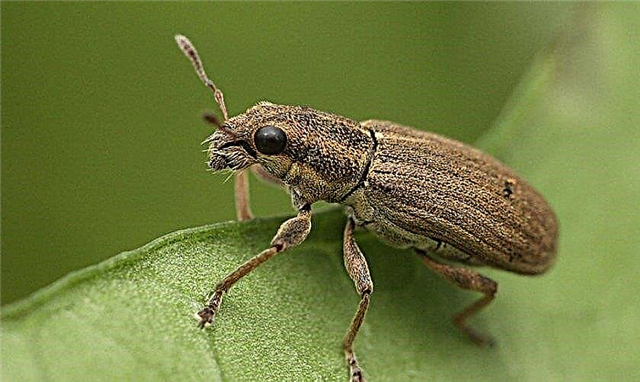
- Chickpea mutant fly. The signs by which a pest can be recognized are yellowing of the leaves. In the end, they begin to curl and fall.

Chickpea Diseases:
- Fusarium With this disease, the leaves turn yellow, the stem becomes dry and fades, and purple spots also begin to appear from the root to the middle of the plant. It is a fungal disease, more often due to the fact that the seeds were not pre-pickled.
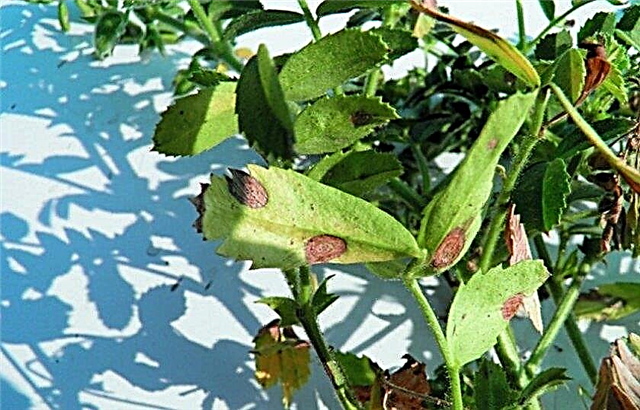
- Ascochitosis. The stalk becomes brittle, and the appearance of brown spots on the leaves can be observed. Most often, the disease appears due to high humidity. At temperatures above + 35 ° C, the disease begins to subside and disappears completely after a couple of days.

- Rust. Spots appear on the leaves, which in appearance resemble rust on metal. If such a disease began to progress, you must immediately remove the diseased plant from the site.
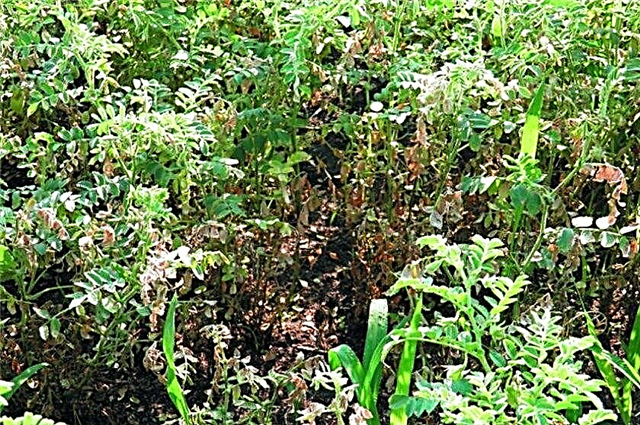
Chickpea productivity
The maximum yield of lamb peas from 1 hectare of the field is up to 35 c peas. The average weight of 1000 peas is 310 g.  The weight of chickpeas depends on watering and quality care: if they were good, then the weight of the fruit will be, accordingly, large.
The weight of chickpeas depends on watering and quality care: if they were good, then the weight of the fruit will be, accordingly, large.
Harvesting and storage
The main harvest of chickpeas begins 80 days after sowing, and some varieties can be harvested after 120 days.
After the crop is harvested, it should be stored in a dark place. It is desirable to use glass or metal containers for storage, and you will also need to tightly close the container with a lid. Nochut can be stored for 10 years, and during this period it does not lose the properties of germination and nutrients.
Important! Since lamb peas absorb odors well, it is not recommended to store next to other vegetables, legumes or cereals.
Crop rotation
It is a healthy culture that is resistant to many diseases. Also, chickpeas are able to enrich the soil with useful substances, in particular nitrogen, helps to normalize the fertility of other cultivated plants. Legume helps reduce plantation processing costs. After chickpeas, you can plant winter wheat.
Nohut grows poorly on the ground, in which sunflowers, watermelons, and perennial cereals were grown before it. It is advisable to plant Turkish peas on a site where there are no weeds and roots from other plants.
Cold growing technology
Cultivated chickpeas are quite frost-resistant, do not require covering the bushes with a special film. Sprouted peas can withstand frosts up to –16 ° C, but adult plants can die at a temperature of –7 ° C. For cold regions, it is advisable to use the variety that ripens early - this will help not to lose yield in the event of early cold weather.
Growing in the middle lane
Lamb peas will grow well in the middle lane, since there are only moderately sunny days and rain. In these regions, chickpeas have time to rise and mature, and harvesting will be simultaneous.
How to grow chickpeas at home on a windowsill
In addition to the garden, chickpeas can be grown at home on the windowsill. However, you should follow the rules to get a bean crop without leaving your home.
Grade selection
For home cultivation, you should take varieties in which the color of the seeds is green, they will give the best seedlings of the plant.
Planting material: whether to soak before planting
Before planting the beans, they need to be soaked, and then rinsed until the water becomes clear. After thorough washing, the peas must be folded into a container (can be in a jar or plastic container) and left for 8 hours. After this time, drain the water and rinse the chickpeas under running water.
Then you should again fill the beans with water and put in a dark place for 10 hours. Drain the water. Seeds wrapped in a piece of natural fabric, leave it for 5 days. Care must be taken that the fabric is always wet.
Important! Before planting, be sure to inspect the chickpea peas so that they do not rot and mold.
Soil preparation
In the soil for growing chickpeas on a windowsill, one third should be sawdust or small pebbles. Mineral fertilizers should be applied: first, dilute them in water, and then pour them into the soil. To do this, you can take the stubble biodestructor fertilizer at the rate of 50 ml per 1 m² of land. To make the soil a little loose, it should be mulched.
To make the soil a little loose, it should be mulched.
Lighting and temperature
It is desirable that mutton peas be grown with sufficient light. If it is not enough, then you will need a special lamp. Air temperature during home cultivation should not exceed + 30 ° С.
Air humidity
Since chickpeas are not picky about a large amount of water and can grow with severe droughts, humidity can be minimal. But still, it will not be amiss to humidify the air from time to time. Humidification can be a regular basin of water near the landing, or spraying water with a spray bottle.
Landing
Sprouted peas are planted in furrows 2 cm deep, and the distance between them should be about 10 cm. After planting, grains should be sprinkled with moist soil.
Watering, top dressing, cultivation
Watering should be regular, especially during the appearance of flowers: once every 2 days it will be quite enough, the main thing is not to flood the plants much. Soil loosening should be carried out as often as possible, and top dressing should be done with the Fitocid and Tseovit preparations as needed. 
It is time to remove plants that are sick or their leaves began to curl, this will help protect the rest of the bushes. Loosening the soil should be carried out every day so that the dry crust of the earth does not block access to oxygen.
Germination, flowering and fruit formation
After the plants reach 10 cm in height, it’s not out of place to put a grid that will guide the growth of the bushes and help to grow them even and strong. To do this, the bushes are tied to a net using small pieces of fabric. It can be made of metal or plastic.
Fertilizers
Fertilize chickpeas before the first flowers appear. Usually fertilizers are added that contain phosphorus and potassium. It is not recommended to feed the culture with nitrogen fertilizers - chickpeas already contain a large amount of nitrogen.
Did you know? Ground chickpeas can be used as a substitute for coffee, while the taste of the drink will be very pleasant and gentle.
Harvesting
The first crop can be harvested after approximately 80 days.
The benefits of Turkish peas
This is a pretty high-calorie product: per 100 g of chickpea, 364 kcal. Depending on the variety, the protein content in this product can vary from 20 to 30%, carbohydrates - about 70%, and fats - 7%.
- Useful properties of Turkish peas:
- contains a high percentage of protein, which can replace the consumption of meat products, which is great for vegetarians;
- It contains amino acids;
- rich in folic acid;
- useful for gluten intolerance;
- It helps to cure bronchitis, and is also able to cleanse the human body.

So, chickpeas are a useful plant, unpretentious to weather conditions and a place of cultivation, drought tolerant. It can be grown both on the site and at home on the windowsill. However, without proper care, this culture is unlikely to please with rich harvests.










